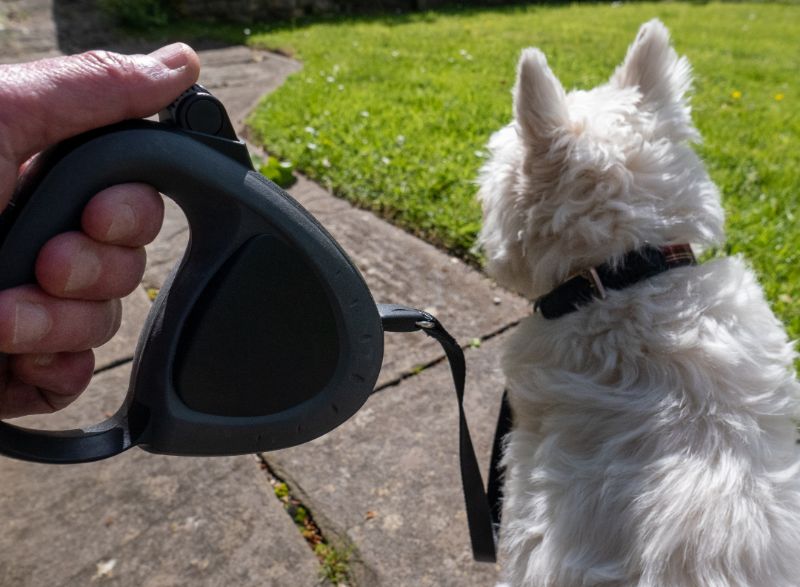A No-Go: The Dangers of Retractable Leashes
If you own a dog you know that the amount of gear and tools needed – bed, collar, food dishes, brushes, treats, dog food, toys – rivals that of a new baby. And of these, a good leash is at the top of the list.
Leashes vary in size, length, material and design, and there are an almost overwhelming amount of choices available. Unless you’re living on the moon, you’ve likely seen retractable leashes too. They can seem convenient and flexible, but before you buy one, consider the dangers of retractable leashes with your friends at Sunrise Boulevard Animal Hospital.
Retractable Leashes Explained
A retractable leash essentially is a spring loaded cord housed in a plastic handle. A button on the handle can be pushed to control how much cord is extended. The cord can be pulled out by the dog when on the open position, and retracted by the human dog walker when a short lead is needed.
Although well trained dogs may be able to walk safely at times on a retractable leash, there are serious risks that come with their use.
Dangers of Retractable Leashes
Many retractable leashes are long – up to 25 feet – which enables the dog to get too far away from the handler to be under control. This allows for unsafe greeting, chasing, leaping, and running. Often, dogs run into the middle of the street, initiate unwelcome contact with people, or greet (and get in trouble with) aggressive dogs. It’s much easier to gain control and protect a dog who is on a sturdy, 6 foot lead.
The strings on the retractable leashes can (and often do) fray and snap, leaving you with no control over your dog. The broken cord can then snap back, injuring the human holding the leash.
Dogs have sustained terrible injuries as a result of the sudden jerk on their neck that occurs when they run out on a retractable leash. These have included lacerated tracheas, spine injuries, and neck wounds.
If a dog walker gets tangled in the leash, or tries to pull the cord back while the dog is out of control, they can sustain serious injuries. These historically have included burns on the hands, legs, and arms, broken ribs, and even severed fingers.
Dogs who pull the handle out of a dog walker’s hand are often frightened by the noise as well as the large item chasing them (if they start to run away). This may cause a fear of not only leashes, but ultimately of being walked at all.
Retractable leashes essentially teach a dog to pull on a leash. By their nature, a dog learns that when he pulls on the leash, he gets to go wherever he wants to!
Safer Alternatives
Luckily, there are several safe leash alternatives that don’t pose the dangers of retractable leashes. All dogs should be walked on a 6 foot lead that allows the handler to quickly control the dog in the event of an emergency.
Basic obedience training is a must when it comes to safety. Teaching your dog to calmly walk on a leash and listen to his handler can prevent disasters of all kinds. Make sure to ask permission before your dog approaches any other dog or person, and always clean up after your pet.
If you have any questions or concerns about your dog’s health or well being, please don’t hesitate to reach out to us. Your team at Sunrise Boulevard Veterinary Hospital is here for you!

